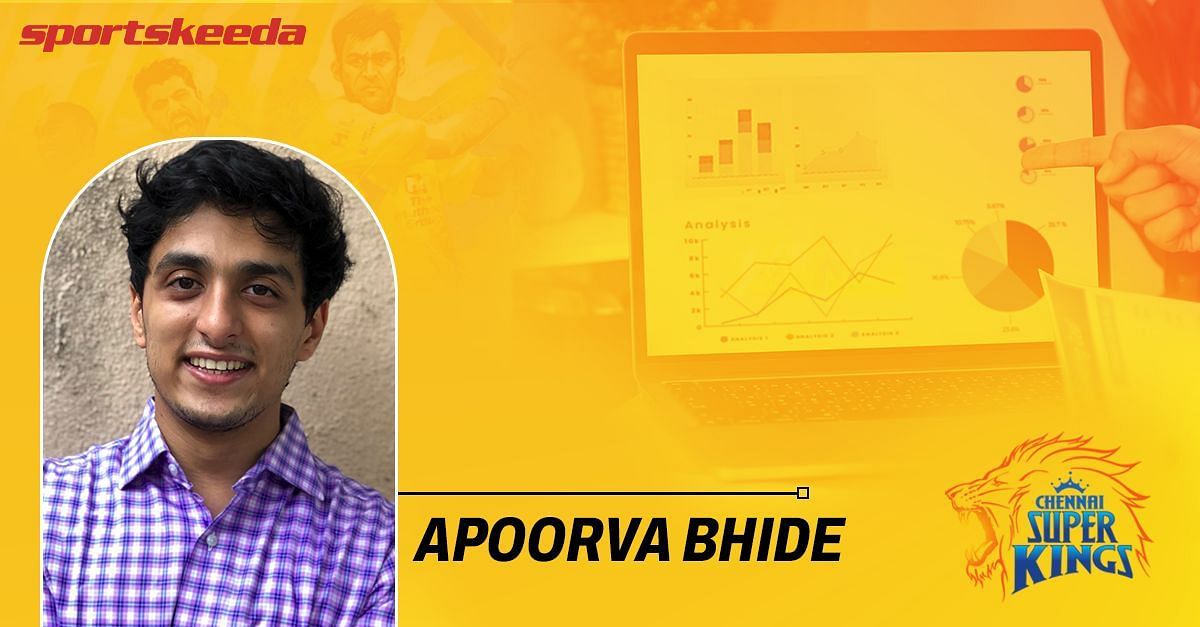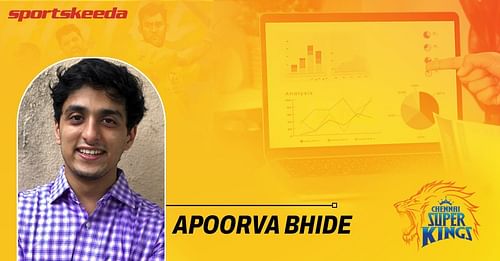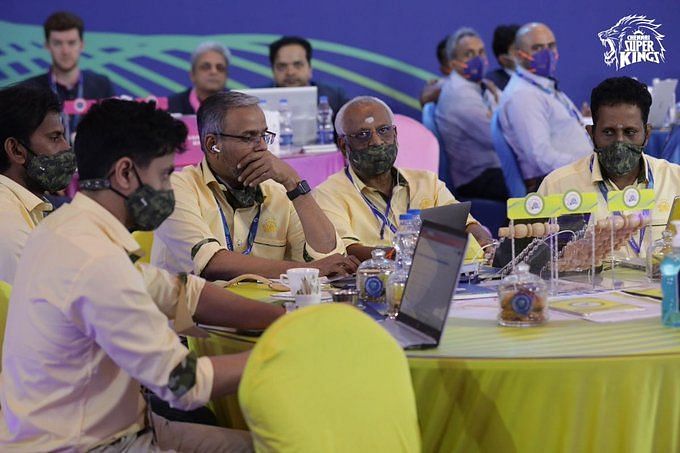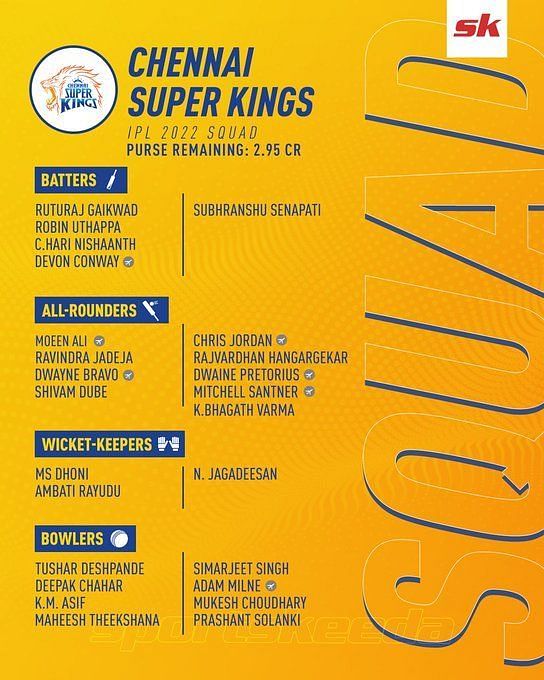
“CSK understand the importance of both buying good players and building a good squad” - Apoorva Bhide, Chennai Super Kings analyst

Few sporting events can become more than just a tournament in how an entire country and people around the world see it. Yet, the Indian Premier League (IPL) has done just that, going from strength to strength, from being an annual cricketing extravaganza to becoming a core part of the social and cultural fabric of India.
With IPL 2022 set to take the stage and be front and center of countless water cooler conversations from 26th March, it is worth taking another look at the teams that have been formed since the recent mega auction that took place.
While all teams have been highlighted extensively before, during, and after the auction for some of their player acquisition choices, few teams have garnered as much fanfare in the history of the IPL as Chennai Super Kings (CSK).
With MS Dhoni having handed the captaincy to Ravindra Jadeja, all eyes will be on CSK throughout the season to see how the new team performs under the swashbuckling all-rounder. A team known for retaining their core and building teams around them, the new-look squad has familiar faces in Dhoni, Jadeja, Deepak Chahar, Ruturaj Gaikwad, etc. while adding the likes of Kiwi batter Devon Conway, Chris Jordan, and Adam Milne, among others.
So how did CSK go about rebuilding their new squad at the auction?
To find out, Sportskeeda spoke to Apoorva Bhide, a data scientist with Kabaddi Adda, who was part of the Chennai Super Kings’ group at the recent IPL mega auction. A self-confessed ardent fan of sports auctions, he pivoted to the field of data science from a background in electronics and communication engineering, and has also been part of Pro Kabaddi League auctions in the past.
Reflecting back on the IPL mega auction, Apoorva spoke about the tools they used on the day and credited the CSK team management for knowing how to work with all the information available to build the squad, saying:
“We wrote in-house tools using R and Python with a Bayesian framework to capture team biases, dimensions of player performance and demand-supply dynamics of an auction to arrive at potential outcomes for a player.”
Adding that this was just how they went about their part of the process, he also said:
“CSK’s auction is a huge team effort, including human input, video analysis and statistical analysis, and the management knows exactly how to use each of these inputs to put together a strategy and a squad.”
Underlining the importance of continuously evolving over time for an undertaking such as building an IPL squad using data science, Apoorva commented:
“Analytics of this nature is a huge undertaking and takes long-term significant and consistent focus. We have been collaborating with CSK for the last 4-5 years and this is a process you keep evolving, so it’s a little difficult to put a start date on it. For any player, a wide variety of metrics are considered in order to evaluate them holistically. The other thing to consider is that, especially in a big auction, it’s important to both buy good players and build a good squad. This is not the same thing. Teams like CSK understand that very well, which underpins a lot of their success.”
Apoorva Bhide’s experience at the CSK auction table
While it can be relatively easy to come up with a fixed strategy, the nature of sports auctions where players one team wishes to buy are constantly getting bidded on and picked up by other teams as well means the IPL auction is anything but.
Paying heed to this nature, it becomes essential for any team to maintain the dynamic nature of the auction where every event has consequences later on in mind, and accordingly come up with a strategy that is dynamic as well, as admitted by Apoorva.
Speaking about his experience at the auction table and how the CSK think tank went about their business of building a new squad, he mentioned:
“At least some players on your list are always going to be on the radar of other teams as well. In this auction, for instance, the addition of two new teams meant a sudden requirement of ~50 additional players to be bought, which made it all the more likely that experienced players from your setup (or your wishlist) would definitely be targeted by multiple teams. So you will definitely have options for each slot and an idea of where to spend how much and some flexibility in their approach. At the same time, you need to decide where that flexibility is very restricted - there are going to be slots you simply cannot compromise on, and you have to account for the premium you are going to pay in that slot.”
With some teams going all out from the get go and others choosing to hold back until the latter stages, Apoorva stated that the goal with preparing for the auction is to anticipate and plan for enough key events as well as their ripple effects, and to be prepared to make the most of them.
For the teams spending a lot of money up front, it meant that they had very little purse left at the end, and a couple of teams had a lot. With a purse of INR 2.95 crore left even at the end of the auction, CSK were ready because of the preparation, as admitted by the team’s young data scientist.
While it is no doubt great to see cricket making use of data science and analytics to go about creating player acquisition strategies, at the same time, the relatively short season durations compared to global leagues like the MLB and NBA means there is still limited data to go around. Admitting as much, Apoorva said:
“The words will sound ridiculous together in the same sentence, but the IPL is a small tournament. The New York Yankees played 162 games in 2021. The Mumbai Indians played fourteen. No matter how good a bowler is, he can bowl a maximum of 56 overs in the league phase of a season. This availability of data can restrict the kind of insights you can draw, because the sample sizes sometimes end up being too small.”
At the same time, Apoorva went on to add that broader questions such as whether it makes sense to invest in U-19 players with a three-year cycle or if it is worth buying a “Dad’s Army” can be a lot easier to answer. Speaking on CSK’s strategy of going for a squad that has been dubbed as the “Dad’s Army”, he referenced the famous sabermetrics approach of the Oakland Athletics, saying:
“That was very much a Moneyball strategy for CSK, and players older than 35 no longer being written off as automatically unviable in 2022 was a vindication of that. That said, with the depth of data increasingly available in cricket, you can answer more questions today than you could five years ago and I imagine you’ll be able to answer a whole lot more of them five years from now. That should be a lot of fun.”
Balancing short and long term team goals for CSK with data
While the next mega auction is three years away now and might not seem that far off, nevertheless, any team always needs to keep an eye on the future while striking a balance with short-term objectives. Signing off by sharing an analyst’s role in balancing these priorities, he said:
“Every team has to keep an eye out for the future while making sure you have the best possible team for the season right in front of you. CSK has historically been able to balance this really well over time - they built a squad in 2008, the core of which was sustained for more than a decade. As an analytics team, our role is to provide planning and decision-making support to continue and codify these processes.”
While fans will always have a wide range of opinions when it comes to any IPL team’s player choices, one thing is for granted, with their storied history in the league and the dawn of a new CSK under Jadeja, the team will continue to attract attention from fans for the days, weeks, and years to come.


